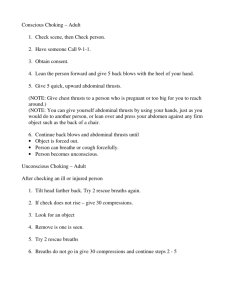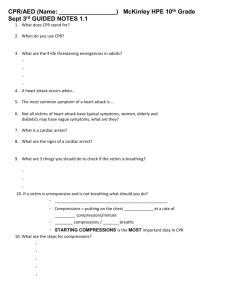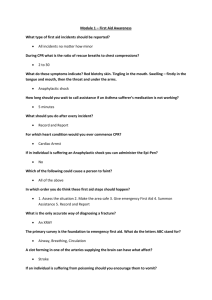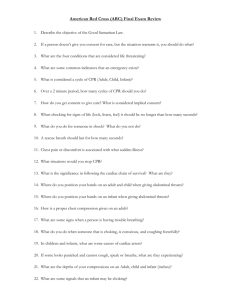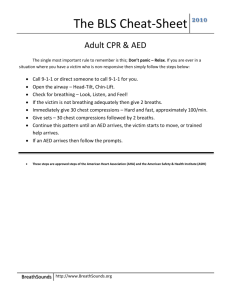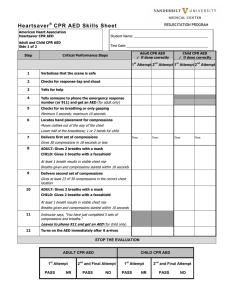Heart Health & First Aid Worksheet: CPR, Stroke, AED
advertisement
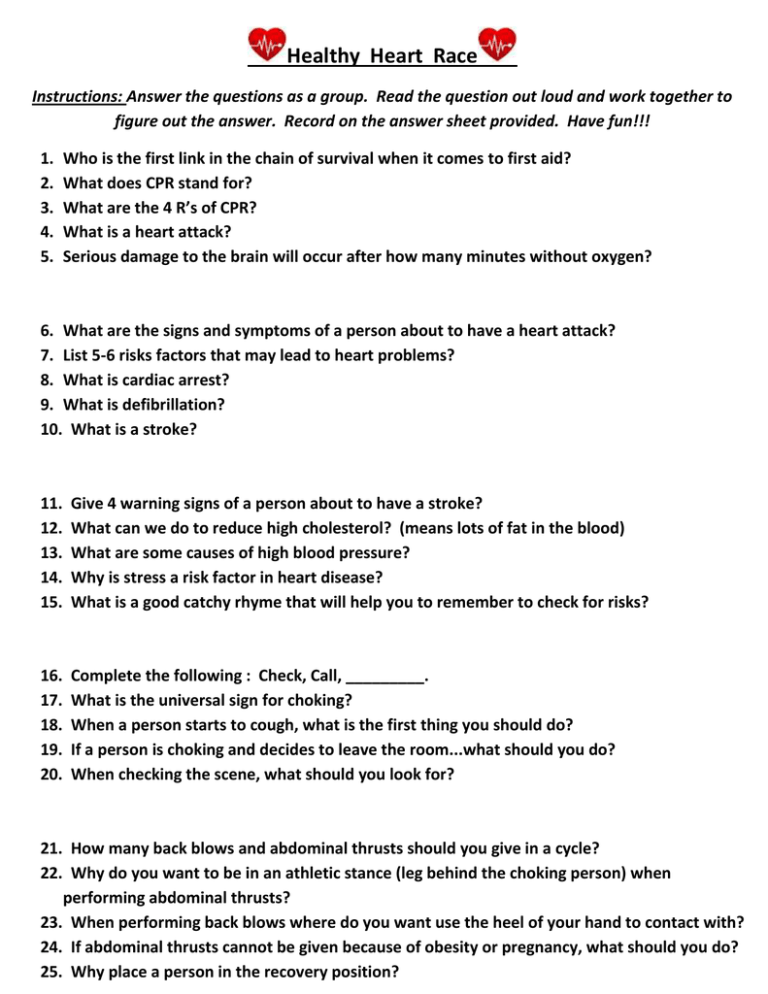
Healthy Heart Race Instructions: Answer the questions as a group. Read the question out loud and work together to figure out the answer. Record on the answer sheet provided. Have fun!!! 1. 2. 3. 4. 5. Who is the first link in the chain of survival when it comes to first aid? What does CPR stand for? What are the 4 R’s of CPR? What is a heart attack? Serious damage to the brain will occur after how many minutes without oxygen? 6. What are the signs and symptoms of a person about to have a heart attack? 7. List 5-6 risks factors that may lead to heart problems? 8. What is cardiac arrest? 9. What is defibrillation? 10. What is a stroke? 11. 12. 13. 14. 15. Give 4 warning signs of a person about to have a stroke? What can we do to reduce high cholesterol? (means lots of fat in the blood) What are some causes of high blood pressure? Why is stress a risk factor in heart disease? What is a good catchy rhyme that will help you to remember to check for risks? 16. 17. 18. 19. 20. Complete the following : Check, Call, _________. What is the universal sign for choking? When a person starts to cough, what is the first thing you should do? If a person is choking and decides to leave the room...what should you do? When checking the scene, what should you look for? 21. How many back blows and abdominal thrusts should you give in a cycle? 22. Why do you want to be in an athletic stance (leg behind the choking person) when performing abdominal thrusts? 23. When performing back blows where do you want use the heel of your hand to contact with? 24. If abdominal thrusts cannot be given because of obesity or pregnancy, what should you do? 25. Why place a person in the recovery position? 26. Why do you want to roll the person towards you when putting the casualty in the recovery position? 27. What does “A” represent in ABCD? 28. What does “B” represent in ABCD? 29. What does “C” represent in ABCD? 30. What does the “ D” represent in ABCD? 31. Describe Check, Call, Care of this situation. 32. When a conscious choking person becomes unconscious and you carefully bring them to the ground, what is the first thing you should do? 33. When a choking unconscious person’s chest does not rise when given breathes, what is the next thing you should do? 34. What is the proper sequence of CPR that should occur when an unconscious choking person is not responding? 35. What is the proper number of compressions and breaths that should be performed when giving CPR? 36. 37. 38. 39. 40. Where do you landmark for chest compressions? About how many inches deep should you do compressions on a casualty? When counting compressions why should you count out loud? List a way to prepare the casualties skin for contact with the pads of the AED? Where would you find an AED? 41. Why would you use an AED? 42. St. David Catholic Secondary School has 2 AED machines. where are they located? 43. You are helping with a child who has drowned and is unconscious laying on the swimming pool deck. How would you prepare the child for AED use? 44. When you check for breathing, what are you looking for? 45. Before you shock a person with an AED what should you say first? 46. Ideally you do both but what is more important 2 breaths or 30 compressions during CPR? 47. What should you do in this situation? 48. Describe Check, Call, Care of this situation. 49. Describe Check, Call, Care of this situation. 50. This man is not conscious. What should you do?
